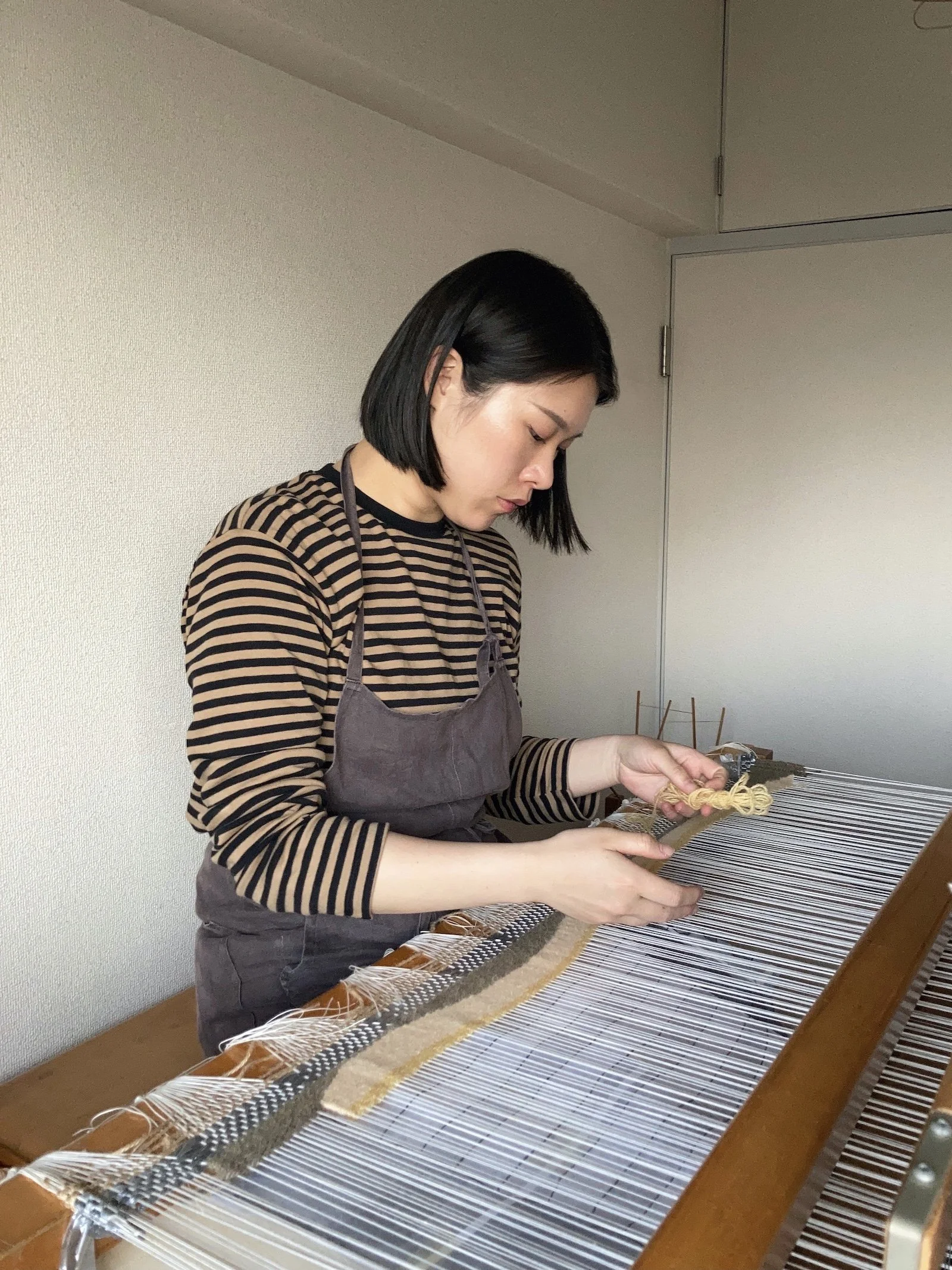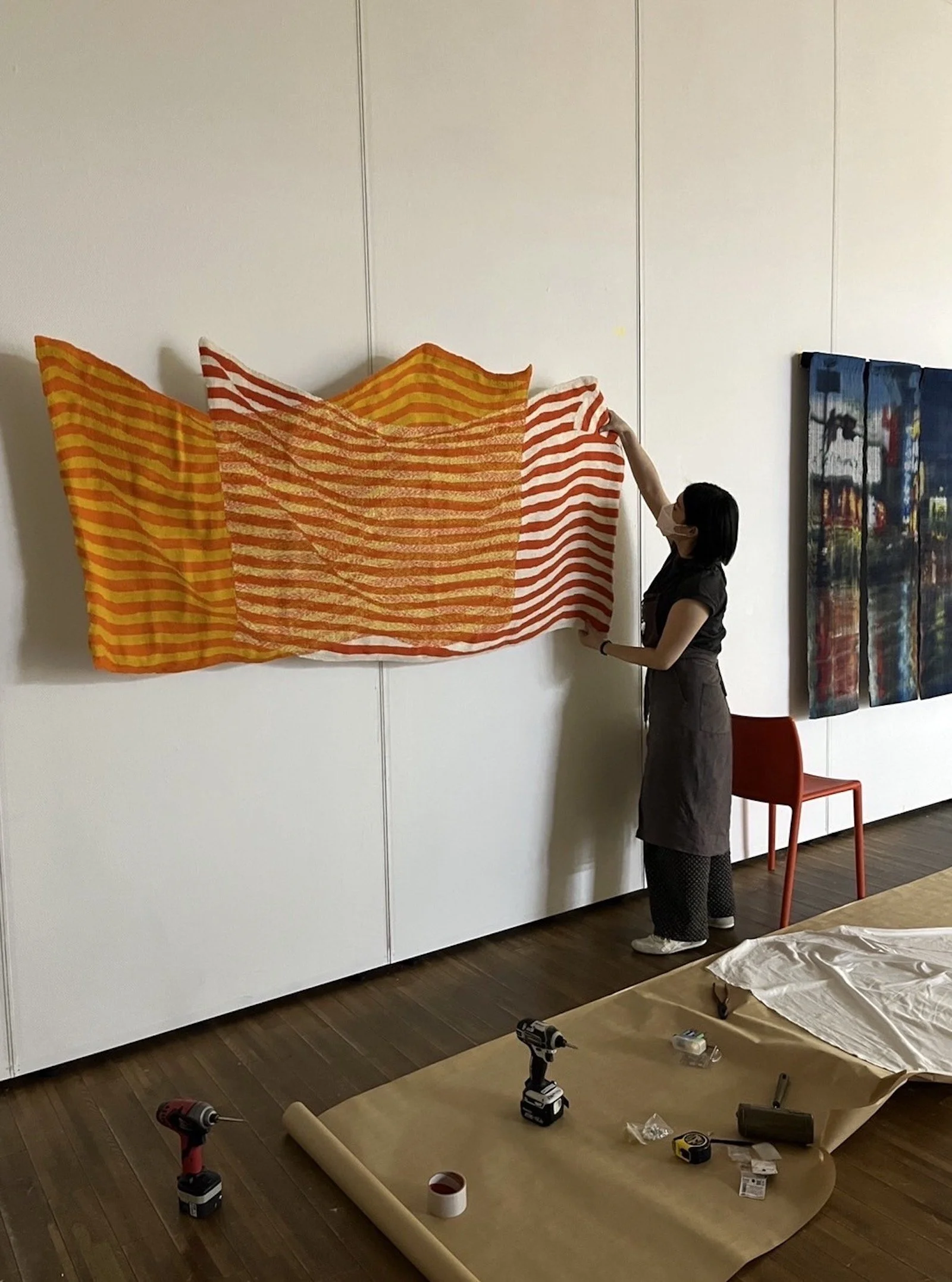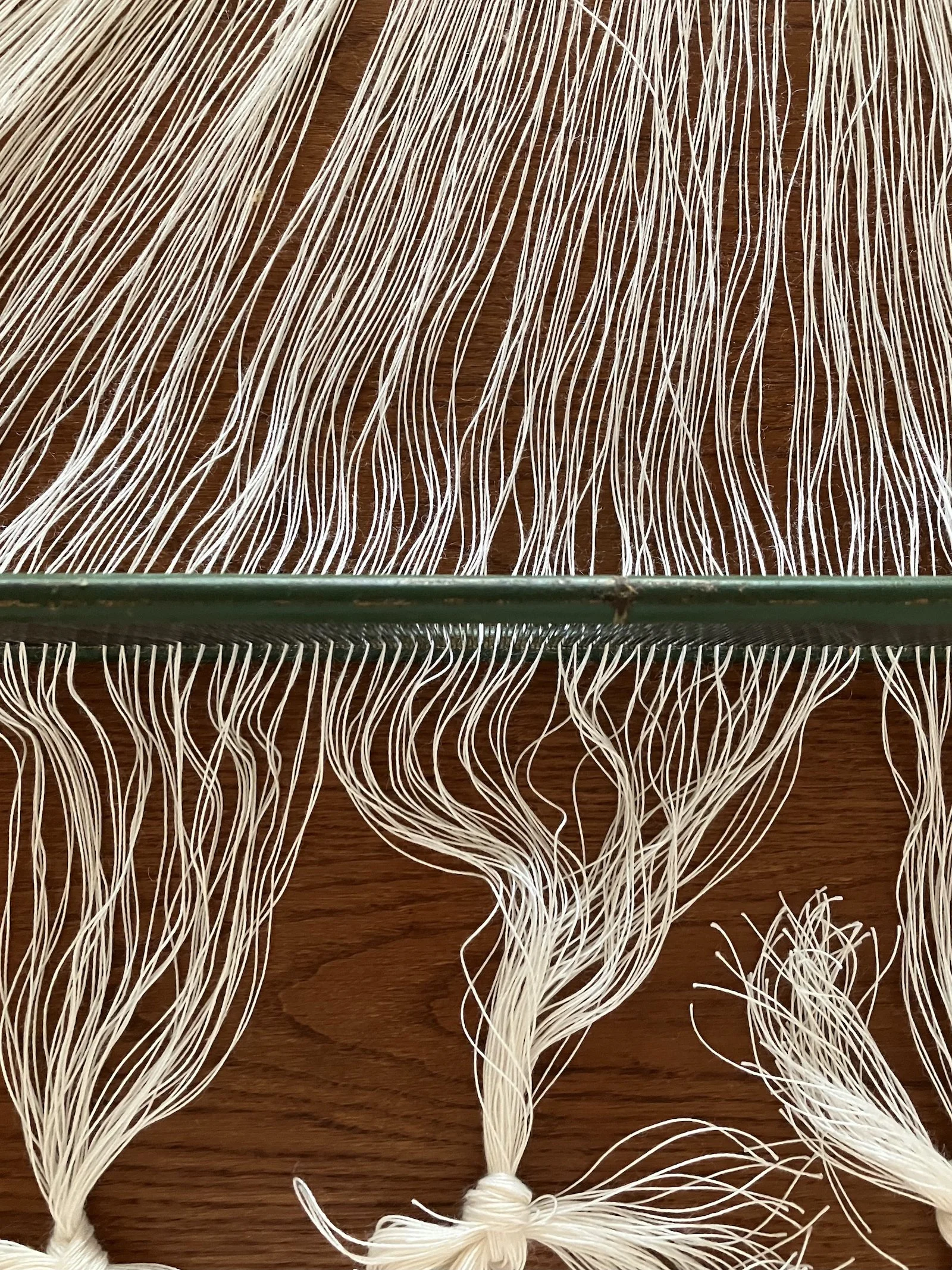Misako Nakahira
Please tell us a bit about yourself.
Hello, my name is Misako Nakahira. The name Misako, written in kanji, means "a weaver of beautiful silk fabrics." My grandmother and mother named me. I am based in Japan as a weaving artist.
How did you become a textile artist? What first led you to textile art and why did you specifically turn your attention to tapestry weaving?
My interest in textiles began with my grandmother, who was a kimono teacher. I became interested in kimonos because of the beauty of her work. I studied the basics of textiles at an art college in Kyoto for four years and then studied tapestry for two years. I first encountered tapestry when I was a university student. In Japan, there isn't much culture of decorating walls with thick woolen fabrics, so I was surprised when I first encountered tapestries. As I learned more about the history of tapestry and its wide range of expression, I became interested in weaving tapestry.
Where did you grow up? Do you think that these places, people, and textile traditions are now manifesting in your art?
I grew up in Shikoku, Japan. It was a country town rich in nature, and I often spent my days harvesting vegetables and fruits, fishing, and hiking. In my hometown, there is a washi production area called "Tosa Washi" (Japanese paper).
There are various washi production areas in Japan, but Tosa washi is characterized by its technique of making the thinnest paper and its wide variety. When I was a student, my intention wasn't to easily obtain materials from online stores in the process of weaving textiles. So I actually went to the production area of Tosa washi and tried to communicate with local people to discover the materials. Currently, I use a variety of materials in addition to washi, but I approach my work with a sense of respect for all materials and the producers who make them.
Can you take us through your process? Do you have a favorite part of the creation process?
My creative process starts with a book that piques my interest, or from a conversation. Through the conversations, I decide on a sole word or image for my designs. Secondly, I think about a motif that fits the image I've decided on, usually something you can find in your daily life (I try to stay away from anything special and choose something that everyone can relate to). Then, I create my rough draft based on the motif I've decided on. After creating multiple samples, I then decide on the materials and color. Lastly, I dye the yarn, set up my loom, and weave my piece accurately to my design.
The thing I always keep in mind when creating my pieces is to not restrict myself to the techniques I've chosen but to weave each piece freely. On that note, tapestry weaving fits my creative process well, as the vivid variations of color that wool radiates is an important aspect of my piece. My favorite part is the weaving process. I like the process of weaving little by little, just like keeping a diary.
What and who inspires you?
My inspiration comes from things I find in my daily life. Those things would be usually nothing specifically special, but rather ordinary. The subtle things you might miss unless you are aware would become my motif. Recently, I have been inspired by architecture and interior design, which sometimes influences my work. For the exhibition held in Paris in September 2022, I exhibited my works in a beautiful gallery that was inspired by an actual living space. By exhibiting in an environment different than Japan, the works looked even better. It was a good stimulus for me to realize that the size, color, materials, and details of the works were affected by the environment.
We know that you are currently involved in teaching. Could you tell us more about this experience and your teaching approach?
Currently, I teach basic weaving and tapestry techniques at a college. I can also teach other techniques such as felting, yarn spinning, macrame, and card weaving. I have been an instructor for 5 years now. I'm still a less experienced instructor among the various instructors. Most of my students have the same age as me so I try to avoid one-way communication. For example, in the tapestry class, students learn basic techniques and create applied works based on a theme.
In creating art work, training only the technique doesn´t make it art work, and only the concept is prior, but it isn´t strong enough to be a textile art. I try to guide my students through clear communication about what they are interested in, what they are confused about, and how they want to output their work. I also want students to experience that there is no one right answer to creating artwork and that there is no such thing as failure.
How important is it to you to work with natural fibers and to prioritize dyeing your own yarns naturally?
I use wool because it goes well with the motifs I choose. And I like wool for its color and flexibility. As for the colors, I value not only ready-made colors, but also dyeing my own colors. Dyeing original colors is important for my work, and I would like to further explore wool materials and techniques in the future.
What is your vision for a responsible, resilient, and human-focused future, through crafts?
I sometimes think about the responsibility of making textiles. Recently, I often think about what happens after the work is in people's hands. For example, will the colors fade quickly, or is it strong enough to withstand exhibition for a long time? I will be weaving textiles while making detailed adjustments to the techniques and materials.
What upcoming projects make you excited right now?
I have plans to exhibit my work in the lounge of a large office building for about 5 months. This will be my first time exhibiting in an office, so I'm nervous, but I'm looking forward to seeing my work and the space together.
Where and how can people engage more with your work?
Through tapestry weaving, I'm hoping to create opportunities for exhibitions, workshops, and residencies all over the world. I´m also available to travel anywhere and of course to meet all of you. Please message me on Instagram. All pictures belong to Misako









